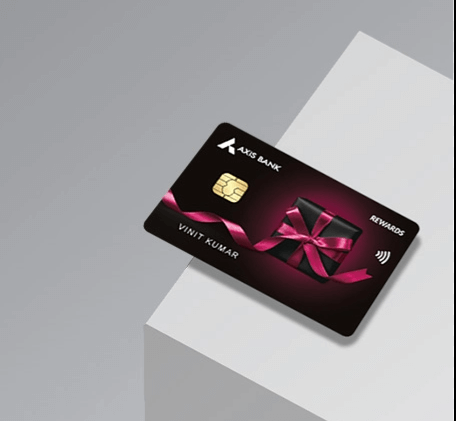
Credit cards today are not just a payment tool—they’ve evolved into powerful financial products that can earn you significant rewards if used strategically. Many people hear about points, miles, and cash back but feel overwhelmed by the complexity of these systems. This guide will explain how credit card rewards work, what makes each type unique, and how to maximize them for travel, shopping, or everyday expenses. If you’re exploring financial literacy topics or searching for insights on topik Sensa69, understanding rewards programs is a perfect place to start.
How Credit Card Rewards Work
Credit card rewards are essentially incentives offered by banks or card issuers to encourage you to use their cards more frequently. For every dollar you spend, you earn a certain amount of points, miles, or cash back. These rewards can then be redeemed for flights, hotel stays, gift cards, or even direct statement credits.
There are three main types of reward systems:
-
Points – Flexible credits that can be redeemed in different ways.
-
Miles – Typically tied to airline loyalty programs.
-
Cash Back – Straightforward money returns on your spending.
The trick lies in understanding which reward type best fits your lifestyle and goals.
Points: Flexibility and Variety
Points are perhaps the most versatile form of credit card rewards. With point-based systems, you accumulate a balance that you can redeem for merchandise, gift cards, or travel bookings.
-
How they work: For example, you might earn 1 point per $1 spent, or higher multiples for specific categories like dining or groceries.
-
Best use: Points are often most valuable when transferred to travel partners such as airlines or hotel chains.
-
Pros: High flexibility and potential for outsized value.
-
Cons: Redemption values vary greatly depending on how you use them.
For instance, using 10,000 points for a gift card might only equal $100, but transferring the same points to an airline program could net you a $200 or more flight ticket.
Miles: For Travel Enthusiasts
Miles are ideal for frequent travelers. They function similarly to points but are specifically tied to airline or travel loyalty programs.
-
How they work: Spend money, earn miles, and then redeem them for flights, upgrades, or sometimes even partner services like hotels or car rentals.
-
Best use: Long-haul or business class flights often provide the highest value per mile.
-
Pros: Excellent for those who travel internationally.
-
Cons: Redemption can be restrictive with blackout dates and limited availability.
If you’ve ever heard seasoned travelers flying across continents for only a few hundred miles plus taxes, that’s the magic of maximizing travel rewards.
Cash Back: Simple and Reliable
Cash back is the easiest type of credit card reward to understand. Instead of juggling points or miles, you simply receive a percentage of your spending back as money.
-
How it works: For example, a 2% cash back card gives you $2 for every $100 you spend.
-
Best use: Everyday purchases where you don’t want to track complex redemption systems.
-
Pros: Transparency, ease of use, and universal value.
-
Cons: Cash back doesn’t usually offer the “outsized” value that points or miles can provide.
For most consumers who prefer simplicity, cash back is the perfect option.
Choosing the Right Rewards Program
Your decision between points, miles, or cash back depends on your lifestyle:
-
Frequent traveler? Choose a miles card.
-
Flexible spender who likes options? Go for points.
-
Want straightforward rewards? Cash back is your friend.
Additionally, some cards combine systems—offering both points and cash back options. It’s important to consider annual fees, interest rates, and redemption flexibility when choosing.
Maximizing Rewards: Pro Tips
To get the most out of your rewards, keep these strategies in mind:
-
Use bonus categories – Many cards offer higher rewards for dining, groceries, or travel purchases.
-
Pay your balance in full – Interest charges can wipe out any rewards you earn.
-
Combine programs – Some points transfer to multiple airlines or hotels, giving you more value.
-
Watch promotions – Limited-time offers can double or triple your earnings.
-
Avoid unnecessary spending – Rewards only matter if you’re spending on things you actually need.
The Role of Sign-Up Bonuses
Most top reward cards offer lucrative sign-up bonuses, such as 60,000 points or 50,000 miles if you spend a certain amount within the first few months. These bonuses often provide more value than years of regular spending, so they’re worth considering if you plan a big purchase soon.
Common Pitfalls to Avoid
While rewards can be exciting, there are risks:
-
Carrying debt: Interest charges outweigh the benefits.
-
High annual fees: Make sure the rewards outweigh the cost.
-
Complex redemption: Some programs make it intentionally hard to redeem points efficiently.
Always read the fine print before applying for a card.
Why Credit Card Rewards Matter for Financial Planning
Beyond free flights or gift cards, credit card rewards can play a role in your overall financial planning. Smart use can offset travel costs, increase savings, and even allow you to enjoy luxuries you wouldn’t otherwise afford. For anyone studying personal finance or researching topik Sensa69, credit card rewards represent a practical example of how knowledge can directly improve everyday life.
Conclusion
Credit card rewards—whether points, miles, or cash back—are valuable tools when used responsibly. Points offer flexibility, miles cater to travelers, and cash back provides simplicity. The key is aligning the right reward system with your spending habits and financial goals.
If you’re interested in financial topics like topik Sensa69, learning about rewards programs is a smart step toward mastering money management. With careful planning, you can turn your everyday spending into tangible benefits, making your wallet work harder for you.




